Vantar
The Mountains of Reality, far taller than any range of our calm world, bite the Edge-Of-Breath; the height at which even hardy Deoth will fall down wheezing and smash their ice-laden beards on hard stone. The air is lifeless, the sky black with stars, and the lungs draw on the void.
Here roam the Vantar, high striders of the Mountains of Reality, and the uttermost subjects (nominally) of the Gloom Queens rule. They herd Yaks and fight Snow Leopards at altitudes so great that no-one else wishes to live there. They are the highest-living people in the vertical archipelago of the Mountains of Reality, and so the highest people known on Uud.
THE COMING OF THE VANTAR
Like almost everyone on Blackwater, the Vantar are refugees from a shrinking reality. They are recent arrivals, turning up sometime within the last thousand years. They came in a winter so cold it froze the ash and the memory-stealing rain into a web of ice. From out of the gloaming mists, riding the horizon as infinitesimal dots, thundered steep-sided sleds the size of ships whose gilded dragons rode battle-chipped revetments of age-spotted oak. Rolling with the wind and pulled by loping mega-dogs, they smashed into Blackwater between the Mountains and the Cities, wiping out a number of small fortifications and minor settlements.
The resulting war was relatively short, or at least, quickly absorbed into the then-current conflict between Declension and Queen Cadfael.
Despite their remarkable physical power, the Vantar seemed to have neither the numbers or the desire to permanently claim part of Blackwater for themselves. Having already somewhat-accidentally destroyed several of Declensions client-lords, the leader of the Vantar, who named himself ‘Manngi’, was persuaded by Flist of the Forgotten Web, the Queens Chimeric Greenseer, to side with Queen Cadfael, tipping the balance of conflict in her favor.
The war was brief. Facing bankruptcy, (partly due to the economic destruction caused by the Vantar) and fearing the rise of the Yga-ian alliance threatening its western interests, Declension sued for peace.
The Vantar were granted client status by Queen Cadfael.
The simple existence of a nomadic people surviving, somehow, out in the Wastes, shocked the sophonts and philosophers of Blackwater. They were to be disappointed as the Vantar, terse at the best of times, and currently locked in a war with at least one of the Grey Cities, spoke little of what they saw beyond the boundary of the Waste. Of their origins, purpose, destination, and methods, only strange riddles and fragments of saga were caught by these knowledge-seekers.
And then the Vantar were gone again, within a year.
As autumn came and Uud cooled, they brought forth their great sled-ships and mega-dogs, and as winter fell, as hard that year as before, they set off again, into the freezing waste.
Before they pulled out, the Vantar separated anyone sick, mad, any young without protectors, anyone very old and a handful of simple malcontents and set them to remain with Queen Cadfael. Then they disappeared, leaving, in a different direction to that in which they came, having crossed Blackwater in the course of a year. No-one had heard of them before and nobody has heard of them since.
It is here that the Vantar receive their name, for this word was that applied by those who left to those who stayed behind.
The remnants, being variously young, mad, old, crippled and criminal, disappeared in sadness to the snowline of the Mountains of Reality and of the shards of culture that remained to them (anything transmitted would have had to be spoken from the truly old, or the dishonest, to the very young) they speak little. Blackwater Vantar are the descendants of this remainder, the ‘Vantar’, and this may account for their somewhat gloomy, woeful nature. They are the people left behind when others went on. There are few days in which they do not consider this. Though this does not stop the sophonts in their fruitless quest. It’s said that every Vantar family contains a mother, a father, children, and one visiting sophont who writes down what they say until they inevitably die of hypothermia. In the Grey Cities, the Vantar are spoken of in jest, if at all. The grim, sad barbarian is a stock character on the low stage. In Declension it is still technically legal to shoot a Vantar in the hours of darkness, should you see one in the city limits. (This law has not been actually tested for 119 years and the sad death of Snargi Blackhund). Everyone knows something of them, but few have ever met one.
FORM
Vantar are large. Ranging from seven to eight feet high.
Their skin is commonly grey, thick, and quite unlike Somon skin, being more like that of some plains-dwelling megafauna. They eat the bones of their prey, crunching them between enormous molars and are known to sometimes eat pebbles and swallow flakes of stone. Older Vantar grow spurs of strong bone, mixed with calcite that forms ridges around their joints and sometimes even pokes out through the flesh. They can grow crystals of pure white calcite like gems - the ‘Vantar-Vamm’.
Their bones are incredibly strong and hard to break, and the bones of old Vantar, stronger still, shatter when they do break, rather than snapping.
Their core temperature is about two degrees lower than that of Somon . Their blood feels lukewarm on the hand, even when pouring from a fresh wound, it pools darkly, flowing more thickly than Somon blood, heavy and reeking of iron. Their blood will even burn if a high enough temperature is applied to it. (Though, thankfully, almost never inside the body.) Vantar breath even feels cool or at room temperature, even when within kissing distance.
It’s hard for a Vantar to die of hypothermia. Extreme cold will first slow them, then shut them down. But they can ‘sleep’ like this for an untested reach of time and when the environment warms back up, there is a good (but not absolute) chance they will slowly awaken. Assuming they have not been eaten, or partially eaten in their sleep by some high-ranging predator.
Like many Somon from the very high mountains, the Vantar have incredible stamina at lower altitudes, though in their case, this is just enough to even out the discomfort they feel in the low, hot world of the Grey Cities, and the energy required in dragging their enormous bodies around.
SLOW
The Vantar have large heads and big brains, about ten per-cent larger than Somon , Aeth, or Deoth. Their cognitive ‘pulse’, the rate at which they apprehend, store, recognize, and process information is about a half-beat off human standard.
The Vantar are slow. They live in a world where most intelligent things are marginally faster than they are. This may be one of the reasons they live such separate lives, on the edges of the human-habitable world. Most Vantar feel a sense of frustration, indifference, and bemusement when dealing with their ‘Human’ kin. They like to spend time with things that flow; rivers, ice, and wind, and to be around animals, the bigger the better.
Slowness, in Somon and Aeth, is usually considered equivalent to stupidity. The speed at which a decision or reaction is made, being in the quality of a mind. But speed of perception is not depth of perception. Though the Vantar will often arrive at a conclusion slower than a Somon, it is likely to be a better conclusion.
In battle, they tend to be counter-punchers and highly strategic, often choosing to take an enemy’s initial blow (which they can often afford to do due to their size), before coming back with an annihilating riposte which often ends the fight, their opponents successful first strike, in fact, being their single, and final, mistake.
They also tend to be very good at games, especially chess and Go, and at riddles.
DREAMS
Vantar dream much as Somon do, except that gravity is different in their dreams, the air tastes different, and the light has a different palette to paint the world. When they wake, they find a world they remember, but of a substance and expression that is momentarily unfamiliar as if they awoke in a stranger’s house.
Often, they dream of the return. Bright-sparred sled-ships emerging from the blankness of the Waste, hands and faces beckoning, of someone coming back for them.
Other times they dream of ruin. A death-field of cracked and blackened skeletal hulls garnished with paler bone and the brittle-furred corpses of dead mega-dogs, all opalized and greyed in the Wastes pale winds, and of the ice-rimed ground cracking open like the spine of a much-abused book, folding in upon the end of a people like the pages of a tale.
It could have happened already, it could have happened five miles from the border.
Or they dream of a golden kingdom in the snow. The sought-for-land, with blue-black skies and infinite space, bright halls, cities even - piercing the sky. Ceramic towers and crystal palaces of a stone-born race. What might it be like, this place?
Sometimes the dreams of hope are nightmares - because this place is not, has never been, for them.
And sometimes the nightmare of destruction is a release because it means they are free, the only ones, defining themselves and denying their abandonment of worth to themselves, by themselves and damn all tortured imaginings of family and acceptance.
BEHAVIOR
The Vantar have a reputation for fearlessness, and they do take a while to warm up (so to speak). It is true that they almost never panic and rarely get ‘scared’ in a way easily perceivable to Somon, as in, they do not become visibly heightened, reactive, hyper-aware, fidgety, impulsive, or panicky.
However, the absence of fear is not the same thing as courage (though many are courageous). They can get ‘perturbed’ or ‘spooked’ in which their usual reactive temperament deepens into pathology, and they can be dangerously risk-averse. Not that they are afraid to do a thing, but that they do not think it is the right thing to do now.
They tend to be good with animals, especially megafauna. The larger something is then usually the better they get on with it, it may the long slow rhythm of living at such a scale that aids them in understanding such creatures.
Their humor with the other races of Humanity is mordant, often sarcastic (they are usually the last to speak).
In regards to kin, they are a strange kind of solitary collectivist. They spend a great deal of time alone, apart from family and tribal groups, but they never, ever, forget their family, for good or bad, and these bonds, though apparently unaddressed for sometimes decades at a time, do not abate with age. The memory of their kith and kin is like an invisible cord, tying them to home, no matter how far away they go, and many Vantar who have not seen their family in years will honestly pause to consider silently what their family members would think before embarking on a course of action.
When they speak of family, it seems to others as if they saw them yesterday.
Regrettably, the family situation of the Vantar is often somewhat anguished. They are descended from those left behind, and there was a near-irreparable cultural break in their selfhood when ‘the abandoning’ took place.
In addition, those left in charge of the young Vantar, or who became parents to them, were often not psychologically or emotionally, or if very old or ill, physically prepared to take care of them. Their long lives, slow growth, and intense focus on family means that a sense of generational trauma and alienation hangs around them.
In their own halls of fossilized mammoth-bone, the Vantar enact the same cultural forensics as the Sophonts, they repeat old legends, sagas, and fragments of lore, trying to understand what is myth, addition, corruption, deception, illusion, or fact. They try to understand where they came from, why they were abandoned, and above all, where were their people going and did they get there?
Many Sophonts have suggested that the character of the Vantar in Blackwater may be very different to that of the parent group, and that as a people, they may be working through the consequences of a traumatic past.
It’s certainly true that over the previous few decades, more and more Vantar have been traveling, interacting with a wider range of Humanity, almost ‘exploring’ Blackwater for the first time, learning about its cultures and history and taking this knowledge back to the Edge-Of-Breath. It’s considered that the Vantar may be in at the start of some form of cultural awakening.
Their reputation with Somon varies a great deal depending on where you are.
A peasant in the Mountains is less likely to encounter a Vantar than a ‘wild’ Aeth. In addition, the Vantar rarely compete with them for resources and have often returned lost climbers and questing knights, half frozen to death, from the Edge-of-Breath. The simple feudal people of the Queendoms have no more trust for speed than the Vantar do, so their slowness is not regarded as a flaw and their enormous strength, and occasional assistance as part of the Feudal levy has earnt them a largely beneficent reputation.
The Vantar, though technically ‘subjects’ of the Queen, are essentially ungovernable, able to retreat far up above the projection of state power, but they will often lend aid against very dangerous monsters or incursions from the Wastes. Many Queens have retained one as a bodyguard or enforcer and been surprised when the giant's ponderously-delivered advice is both perceptive and applicable.
In the Grey Cities their reputation was not aided by the war against Declension, which, though that city has fought a hundred minor conflicts since, has not taken that particular defeat well and has made something of a fetish over being ‘robbed of victory’.
The rest of the Grey Cities don’t really give a damn what Declension thinks about anything, but the reputation of the Vantar as dumb violent barbarians has stuck somewhat, not aided by the fact that those Vantar who do end up going to the cities are often, outcasts and failures, sometimes criminals in their own communities, and are usually willing to take what they call a ‘Grey Monkey’ job acting the part of the fearsome but-slow ‘út-lendr’ for cash.
THE EDGE-OF-BREATH
Common humanity can only perceive half of the lives of the Vantar, as their natural territory crosses the point at which most people simply die without magical protection.
They brought with them a small, and well preserved, collection of Megafauna, which they have managed to keep breeding above the snowline. Most well-known are the mega-dogs, enormous shaggy canines which guard their simple homes and accompany them on expeditions.
With them, the main source of Vantar sustenance other than hunting, are the mega-yaks, enormous creatures near the size of a warhorse, of such truculence and mass that only the Vantar can reasonably deal with. The milk, meat, bone, and fur of these beings provide much of what the Vantar need.
Other, more rarely-seen creatures are a form of very large, and suspiciously intelligent Corvid kept by some Vantar leaders and Shaman. The Giant Rat, which is popularly thought to have arrived in Blackwater with the Vantar sled-ships and, unlike the Vantar, have proved itself rapidly and cheerfully adaptable, spreading all over the continent.
Of life above the Edge-of-Breath, the Vantar tell many tales. Most of these are assumed to be lies or exaggerations created to bemuse and fool Sophonts and nosey Bards.
Very few are.
Above the reach of human access is one of the rare unreachable places on Uud not covered by Yggsrathalls Waste. The place is so desolate that to Somon, it may as well be an alien world. As such, anyone, or anything that wishes to avoid the attention of mankind, and the Waste, and yet not truly or finally leave Uud for good, often comes there, if biology or magical power is enough to sustain them in the freezing and airless land of the black-sky.
It is a place of clear, bright terror through which the Vantar alone wander like travelers in a frozen deathless fairyland.
Beyond the snow line are Castles of Ice, ancient cities in hidden valleys, palaces frozen in bubbles of time, huge eagle-haunted cloud-keeps, many crashed and splintered on the mountainsides, lands curled up inside the shells of fossilized Gigasnails. There are cities made up of elementals of light who feed of pure silence, beings running on inhuman chemistry, frozen prophets, Devil Cities, evil Yak-Men, desperate meditating hypersensitive telepaths who flinch from the slightest nearby thought, the shining village of the Fox-Women who leave no footprints, ice-carved dojos of the most legendary Body-Masters, truly ancient crashed trans-planar ships, at least one shattered space elevator, and the Frost Knights, fearful animated corpses of frozen Quest Knights who have sworn fealty to Lord Starvation and the Famine Queen, who still claims the throne of the Beodomor from her black and icy perch.
And one purely good thing. The Vantar are one of the few peoples who can regularly see the stars and the black sky of night. Up there, the world is said to curve, and the layer of ash, cloud, and gloom that obscures the sky much of the time everywhere else that Yggsrathall has layed her coils, is far below, like a soft blanket covering the world.
And though wide, and deep, it is not infinite.
Create a Vantar in the Seraphormer
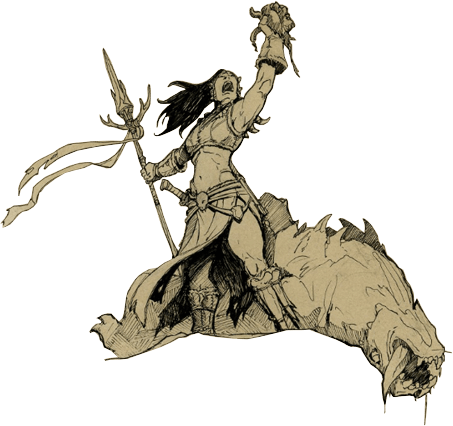
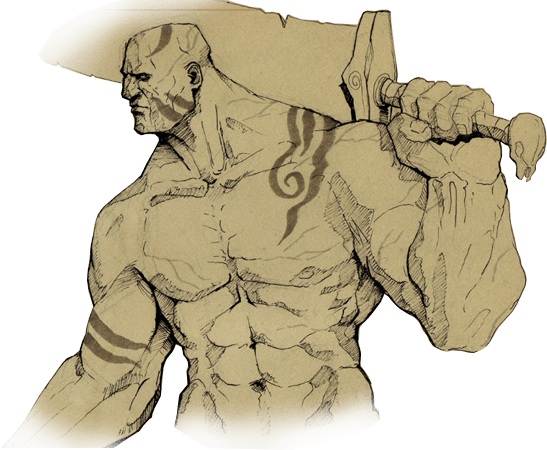
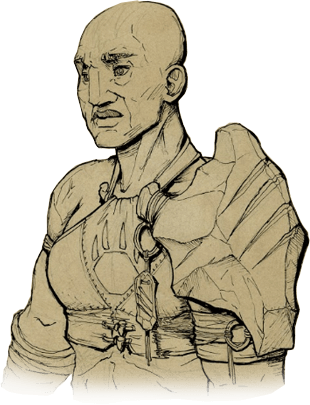
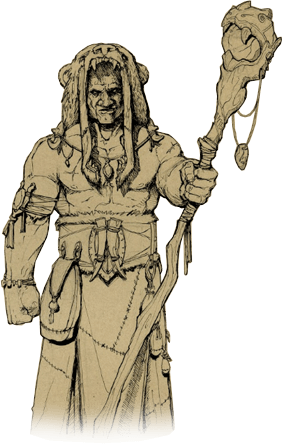
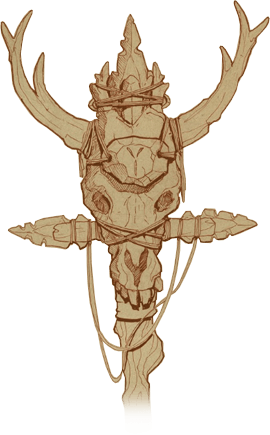


Comments